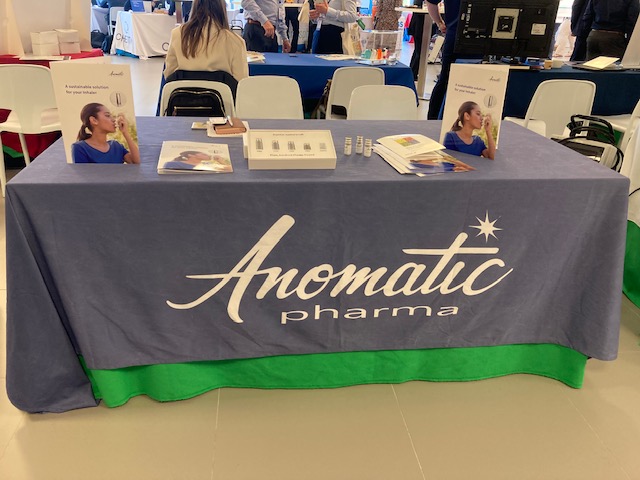The “circular economy” issue also had a place in the exhibition with canister manufacturer Anomatic promoting its cans as “A sustainable solution for your inhaler.” Injection mold maker IGS GeboJagema acknowledged pressure from pharma companies to reduce carbon footprint along the supply chain and said that it was responding by developing molds that require significantly less energy during the molding process.
Other exhibitors in the “Building a Sustainable Future” knowledge space included device makers like RxPack and H&T Presspart and MDI mixing system specialists Briggs of Burton, which touted its experience in building systems for HFA 152a.
Because the “Building a Sustainable Future” knowledge space was the only one that encompassed MDIs, other exhibitors that situated themselves in that space included Dymel 134a manufacturer SRF and Solkane 227 maker Daikin.
Nasal delivery
Interest in dry powder nasal formulations and dual delivery of powder to the nose and lung simultaneously were major trends at RDD Europe 2023. Ironically, both podium presentations in the “Aqueous Agenda: Navigating Nasal” knowledge space discussed nasal powder formulations. A workshop presented jointly by Catalent and Proveris Scientific on “Synergies of Inhalation Product Development and Spray Characterization” also discussed nasal powder formulations in addition to liquid nasal sprays, and several posters addressed nasal powders.
In her talk titled “Intranasal Vaccination: Rationale, Progress and Challenges,” Julie Suman of Aptar Pharma noted the increasing interest in nasal vaccination and pointed out that the nose is the only mucosal site that can develop both mucosal and systemic immunity. “Perhaps the biggest challenge for nasal drug delivery and for vaccine delivery,” she said, “is mucociliary clearance,” explaining that clearance might take place in as little as 15 to 30 minutes. In the workshop session, Medpharm also focused on the importance of mucociliary clearance in the nose in its presentation on “In Vitro Epithelial Models to Aid Nasal and Pulmonary Product Development.”
She also identified the lack of approved nasal adjuvants and safety concerns about adjuvants; difficulty in determine the dose volume; and differences in deposition with different head position as challenges. In response to a question about nasal casts, she agreed that the lack of any standard casts is also a challenge in developing nasal vaccines and advised using a cast derived from a scan of a living person, not a cadaver, and validated.



